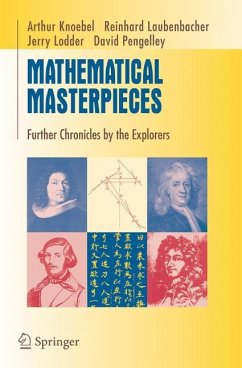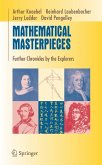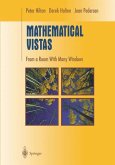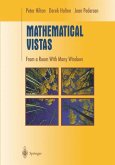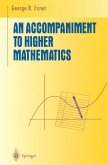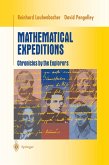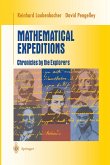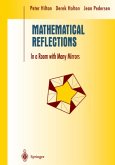The spirit of this book is based on the study of original historical sources to learn great mathematics via the rich insights and motivation provided by original sources. Both the nature and structure of this book are similar to that of the authors' previous UTM, "Mathematical Expeditions". However, the level and mathematical emphasis in the new book is different. "Mathematical Expeditions" contained material from a freshman and sophomore level course, while this new book is taken from a junior and senior level course. At the same time, the focus of the new book is more on modern mathematics than was the case with "Mathematical Expeditions". The new book is more about mathematics than it is about its history. The authors' goal is to throw light on the mathematical world in which we live, and in the process, to introduce students to the exciting world of mathematical discovery, to get across the thrill of exploring the unknown that motivates most mathematicians.
In introducing his essays on the study and understanding of nature and e- lution, biologist Stephen J. Gould writes: [W]e acquire a surprising source of rich and apparently limitless novelty from the primary documents of great thinkers throughout our history. But why should any nuggets, or even ?akes, be left for int- lectual miners in such terrain? Hasn't the Origin of Species been read untold millions of times? Hasn't every paragraph been subjected to overt scholarly scrutiny and exegesis? Letmeshareasecretrootedingeneralhumanfoibles. . . . Veryfew people, including authors willing to commit to paper, ever really read primary sources-certainly not in necessary depth and completion, and often not at all. . . . I can attest that all major documents of science remain cho- full of distinctive and illuminating novelty, if only people will study them-in full and in the original editions. Why would anyone not yearn to read these works; not hunger for the opportunity? [99, p. 6f] It isin the spirit of Gould's insights on an approach to science based on p- mary texts that we o?er the present book of annotated mathematical sources, from which our undergraduate students have been learning for more than a decade. Although teaching and learning with primary historical sources require a commitment of study, the investment yields the rewards of a deeper understanding of the subject, an appreciation of its details, and a glimpse into the direction research has taken. Our students read sequences of primary sources.
In introducing his essays on the study and understanding of nature and e- lution, biologist Stephen J. Gould writes: [W]e acquire a surprising source of rich and apparently limitless novelty from the primary documents of great thinkers throughout our history. But why should any nuggets, or even ?akes, be left for int- lectual miners in such terrain? Hasn't the Origin of Species been read untold millions of times? Hasn't every paragraph been subjected to overt scholarly scrutiny and exegesis? Letmeshareasecretrootedingeneralhumanfoibles. . . . Veryfew people, including authors willing to commit to paper, ever really read primary sources-certainly not in necessary depth and completion, and often not at all. . . . I can attest that all major documents of science remain cho- full of distinctive and illuminating novelty, if only people will study them-in full and in the original editions. Why would anyone not yearn to read these works; not hunger for the opportunity? [99, p. 6f] It isin the spirit of Gould's insights on an approach to science based on p- mary texts that we o?er the present book of annotated mathematical sources, from which our undergraduate students have been learning for more than a decade. Although teaching and learning with primary historical sources require a commitment of study, the investment yields the rewards of a deeper understanding of the subject, an appreciation of its details, and a glimpse into the direction research has taken. Our students read sequences of primary sources.
From the reviews:
"This book is closely related to courses of mathematics held for students at New Mexico State University ... . An important aspect of the book is the numerous exercises, which should help students to gain a deeper insight into the presented material. Numerous references and well-organized indices make the book easy to use. It can be recommended for university libraries and students with an interest in the history of mathematics presented from a modern point of view." (EMS Newsletter, September, 2008)
"This book consists of four chapters, each of which presents a 'sequence of selected primary sources' leading up to a 'masterpiece of mathematical achievement'. ... Each chapter contains ... lots of historical comments sketching the further development of the topic. There are also a lot of exercises. ... This is a well written and entertaining book that can (and should) be used in seminars or reading courses." (Franz Lemmermeyer, Zentralblatt MATH, Vol. 1140, 2008)
"This book is closely related to courses of mathematics held for students at New Mexico State University ... . An important aspect of the book is the numerous exercises, which should help students to gain a deeper insight into the presented material. Numerous references and well-organized indices make the book easy to use. It can be recommended for university libraries and students with an interest in the history of mathematics presented from a modern point of view." (EMS Newsletter, September, 2008)
"This book consists of four chapters, each of which presents a 'sequence of selected primary sources' leading up to a 'masterpiece of mathematical achievement'. ... Each chapter contains ... lots of historical comments sketching the further development of the topic. There are also a lot of exercises. ... This is a well written and entertaining book that can (and should) be used in seminars or reading courses." (Franz Lemmermeyer, Zentralblatt MATH, Vol. 1140, 2008)

